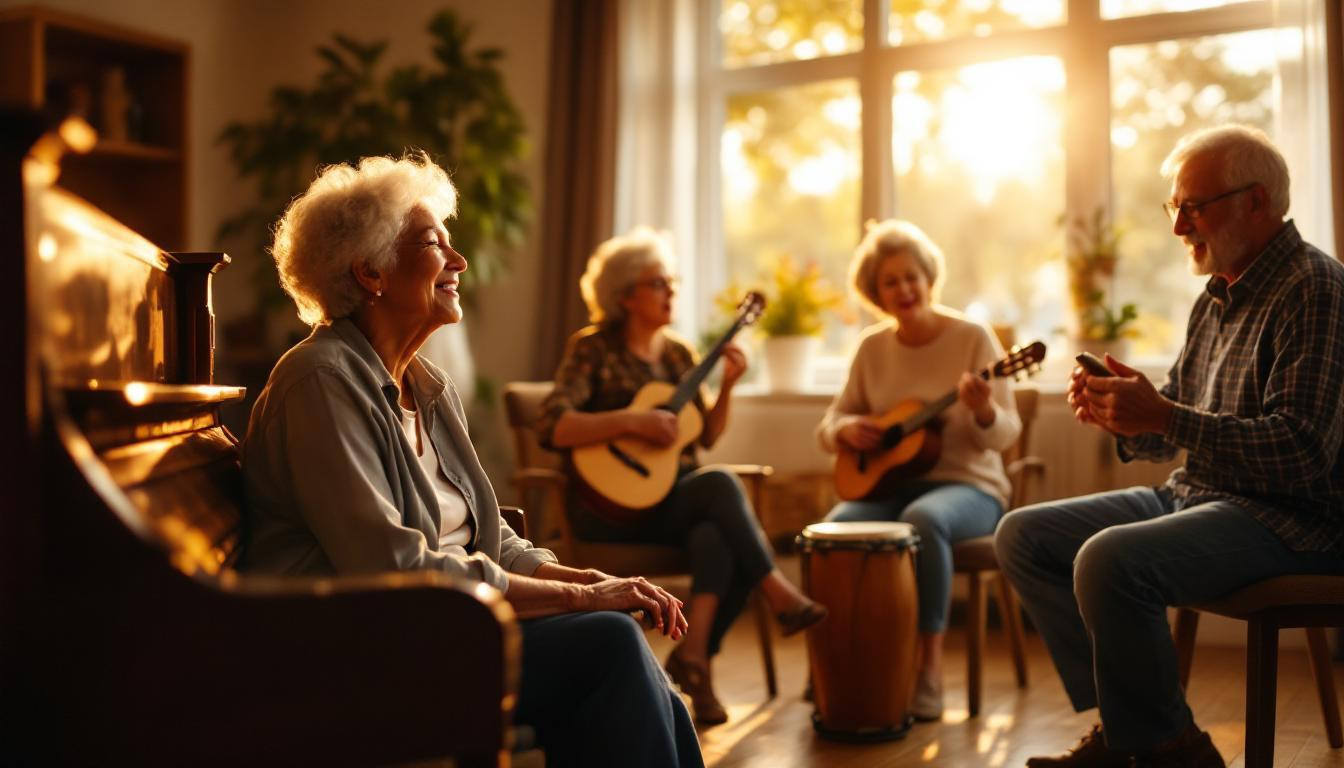The healing power of music transcends age, but for adults over 60, it becomes a transformative therapy with remarkable benefits. Research shows that regular music engagement can reduce depression symptoms by up to 25% in older adults, while activating neural pathways that remain intact even when other cognitive functions decline. This non-pharmaceutical approach is revolutionizing senior care across America.
How music rewires the aging brain
“Music therapy creates neural highways that bypass damaged areas of the brain, allowing seniors to access memories and emotions that seemed lost,” explains Dr. Maria Chen, neurologist at Austin Memory Center. “It’s like finding hidden doorways in the mind.”
This cognitive stimulation is particularly powerful for those experiencing memory challenges. Studies show music activates both hemispheres of the brain simultaneously, creating connections that enhance mental clarity and reduce brain fog. For seniors, this means:
- Improved recall of personal memories
- Enhanced verbal fluency and communication
- Better executive functioning for daily tasks
The emotional symphony: mood and well-being
Margaret, 72, attended her first music therapy session reluctantly after her husband’s passing. “I hadn’t touched a piano in decades,” she recalls. “Three months later, I was playing weekly for our community group. The music rebuilt my sense of purpose when nothing else could.”
Like Margaret, many seniors experience significant mood elevation through music therapy, similar to effects seen with natural serotonin boosters. Group sessions particularly excel at combating isolation and depression by creating:
- Shared emotional experiences that build connection
- Safe spaces for processing complex feelings
- Regular social interaction with purpose
Physical rhythms and restoration
The body responds to music in measurable ways that benefit aging systems. Rhythmic activities improve coordination, while calming melodies reduce cortisol levels, providing stress reduction comparable to nature therapies.
“What’s fascinating is how music therapy improves physical metrics we wouldn’t expect,” notes Samantha Wright, certified music therapist. “My clients often report improved sleep quality and reduced pain perception after just six weeks of regular sessions.”
These physical benefits extend to improved sleep architecture, with participants experiencing deeper rest similar to those using natural sleep remedies. Music therapy works partly by helping reset disrupted circadian rhythms common in older adults.
Creating your personal sound prescription
Think of music therapy as a multivitamin for your brain—different genres and activities provide different benefits. To begin your own practice:
Start with familiarity. Music from your 15-25 age range creates the strongest emotional and memory responses.
Progress to participation. Singing, drumming, or movement activities provide greater benefits than passive listening.
Establish consistency. Daily musical engagement for just 15 minutes delivers cumulative effects, with research showing benefits increasing after 12 weeks.
The beauty of music therapy lies in its accessibility—no prescription required. Whether through community singing groups, personalized playlists, or professional therapy sessions, this powerful intervention offers a symphony of benefits for enhancing life after 60, harmonizing body, mind, and spirit in ways medication alone cannot achieve.
